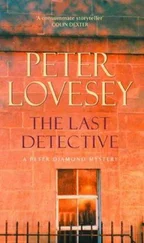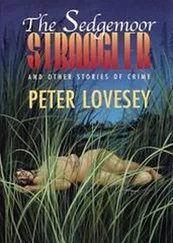Peter Lovesey - The Summons
Здесь есть возможность читать онлайн «Peter Lovesey - The Summons» весь текст электронной книги совершенно бесплатно (целиком полную версию без сокращений). В некоторых случаях можно слушать аудио, скачать через торрент в формате fb2 и присутствует краткое содержание. Жанр: Полицейский детектив, на английском языке. Описание произведения, (предисловие) а так же отзывы посетителей доступны на портале библиотеки ЛибКат.
- Название:The Summons
- Автор:
- Жанр:
- Год:неизвестен
- ISBN:нет данных
- Рейтинг книги:4 / 5. Голосов: 1
-
Избранное:Добавить в избранное
- Отзывы:
-
Ваша оценка:
- 80
- 1
- 2
- 3
- 4
- 5
The Summons: краткое содержание, описание и аннотация
Предлагаем к чтению аннотацию, описание, краткое содержание или предисловие (зависит от того, что написал сам автор книги «The Summons»). Если вы не нашли необходимую информацию о книге — напишите в комментариях, мы постараемся отыскать её.
The Summons — читать онлайн бесплатно полную книгу (весь текст) целиком
Ниже представлен текст книги, разбитый по страницам. Система сохранения места последней прочитанной страницы, позволяет с удобством читать онлайн бесплатно книгу «The Summons», без необходимости каждый раз заново искать на чём Вы остановились. Поставьте закладку, и сможете в любой момент перейти на страницу, на которой закончили чтение.
Интервал:
Закладка:
The Summons
Peter Lovesey
Chapter One
They say when one door shuts, another opens.
In Albany Prison, when one door opens, another shuts.
A frustrating problem.
When a judge tells a convicted man that life in his case should mean the rest of his natural span, and when he is repeatedly denied leave to appeal, that man’s mind may turn to other ways of shortening the sentence. John Mountjoy was classified as Category A, highly dangerous to the public, the police or the security of the State. And he was thinking of moving.
Those doors. They function on an ancient principle. You pass through one and find another barring your way. Before the second can open, the first must close behind you. That was how castle gates were made a thousand years ago. But in the electronic age the mechanism is automatic.
They tell the new arrivals in Albany that they don’t have maximum security. It is ultimate security. All the gates and doors are linked to a computer housed in a control room bristling with television monitors. Approach a door anywhere in Albany and you are up there on the screen. That control room really is the hub of the place. Apart from the monitors, it houses a master location panel, radio-communications sys- tern, the generator and, of course, the team of prison officers on duty. By a stroke of irony that causes no end of amusement to the inmates, those screws have to be banged up more securely than anyone else in the prison. Steel doors, dogs, floodlights and a chain-link security fence all round. If anyone broke into the control room, there would be scenes like the last reel of a James Bond movie.
Mountjoy was confined in D Hall, where most of the lifers were. When leaving D Hall to visit the workshops they were escorted through the double doors, courtesy of the computer, into the central corridor where there was always an unbroken line of screws observing them.
D Hall has glass doors. Smile if you wish, but it is no laughing matter to the inmates. The glass is bandit-proof and lined with steel mesh. Those doors will not budge except at the touch of a switch in the control room. There is a seven-second delay between the closing of one and the opening of the other. Anyone wanting to enter or (more likely) exit from D Hall is compelled to stand in the hermetically sealed unit and be scrutinized. If the control team has the slightest doubt, the interval can be extended indefinitely.
It took John Mountjoy a week of observing the comings and goings to conclude that there was no chance of outsmarting the electronics. You might outwit a human. Not a microchip. The wisdom inside is that even if the power system failed, one of those doors would always remain closed.
No other escape routes beckoned. The walls are half a meter thick, the windows have manganese steel bars and every ledge and wall outside has a razor-wire topping. Tunneling was out of the question for Mountjoy because of the rule that lifers must be housed with other cells above and below and on either side of them. Surveillance cameras are located everywhere. If he got outside the main prison block, he would still have to negotiate dog patrols, geophonic alarms, five-meter chain-link fences and massive walls lit by high-mast flood- lights. Albany was built to replace Dartmoor. It is known as the British Alcatraz because they located it on the Isle of Wight. So even if a man succeeded in getting over the wall he would still have some thinking to do.
The first step Mountjoy took toward escaping was unplanned. In the corridor outside the recess (where the prisoners slop out) he found a button, a silver button with the embossed crown design, a button from a screw’s uniform. You never know when you might find a use for something, so he kept it hidden in his cell for eighteen months before he acquired another.
The opportunity came one summer evening when the screws frogmarched him to the strongbox, one of the punishment cells for troublesome prisoners. He had got into a brawl, a right straightener as the old lags termed it, over a letter some cretin had snatched from him, a letter from his mother. Mountjoy wasn’t pleased. He fought when the screws stripped him and threw him inside the strongbox. He ended bruised and bleeding, but in credit. In his fist he had compensation, a shining silver trophy ripped from a black serge tunic. When eventually he was returned to his cell it joined the first button in a secret space under the spine of a dictionary.
Screws hate being shown up as negligent. The slightest character flaw anyone reveals in prison is magnified many times, and the screws fear exposure as much as the men they guard. Prison lore suggests that they are worse than the prisoners at grassing on each other. Rather than admit to losing a button and making a search that everyone hears about, a screw will keep the loss to himself and have his wife sew on another. Prison culture doesn’t always work in the best interests of the system.
Mountjoy began to see possibilities in this. He started actively adding to the button collection. While working in the tailoring shop a month or two later, he met a new prisoner, a kid of eighteen transferred from Parkhurst and desperate to obtain tobacco. A deal was struck. Everything in the prison is open to barter. Mountjoy let the kid know that a breast-pocket button would be worth cigarettes to him, and he told the kid truthfully that if he got in a scuffle with the screws they’d treat him leniently the first time. Within a month he had the button and the youth had five roll-up butts, one match and a threat of castration if he grassed.
One sunny afternoon a long time after this an unimagined opportunity came Mountjoy’s way. Another feud had ended in fisticuffs and he was back in the segregation unit under Rule 48. If they let you exercise at all in Y Hall, as the unit is known, it has to be solitary. The yard is divided by thermalite blocks into a series of narrow exercise bays. The screw watching Mountjoy had just hung his tunic on the back of a plastic chair when he was called suddenly to a disturbance nearby. In the few seconds Mountjoy was left unattended except by a camera, he completed his set of buttons. Three years inside had taught him how to dodge the camera lens.
In the prison world certain escapes have passed into legend. The springing of the spy George Blake from Wormwood Scrubs in 1966 is still spoken of with awe, and so is the helicopter grab of two men from the yard at Gartree in 1987. John McVicar’s escape from Durham was made into a film. John Mountjoy was about to earn his place in the hall of fame. People say it was an astonishing gamble. It was nothing of the sort. It was a sober calculation, the shrewd bid of a player in a poker game of infinite duration.
How would you plan it, given that you had a full set of buttons? Mountjoy rejected the obvious. He didn’t make himself a prison officer’s uniform in the pious hope of bluffing his way through the doors. That would run too great a risk. Screws may not be noted for their IQs, but they are capable of recognizing one another and spotting the flaws in a homemade uniform.
He studied art. That is to say, he gave himself a reason to work with pencils and paper, drawing abstract shapes and shading them. Nothing too ambitious. As the tutor remarked, his style was more Mondrian than Picasso. Just black and white squares. Small ones, regular in size. The tutor suspected Mountjoy was more interested in making a miniature chessboard than an abstract, and it became a long-running joke between them.
He also worked with other art materials. In secret, he experimented using paints as dyes. He wanted a mix that would blacken T-shirts. The aim was pure black. It was a painstaking process, progressing through a series of grays. He was patient. He had abundant time and a good collection of rags harvested from the security fence around the yard, where rubbish is routinely tossed from cell windows and picked off next day by cleaning squads. Only when he was satisfied with the blackness of his dyed rags did he begin immersing two prison-issue T-shirts. Then by night-using needles from the tailoring shop and a blade formed from the handle of a toothbrush honed to razor sharpness on his cell wall-he started the laborious process of cutting and sewing together a passable tunic. A police constable’s tunic.
Читать дальшеИнтервал:
Закладка:
Похожие книги на «The Summons»
Представляем Вашему вниманию похожие книги на «The Summons» списком для выбора. Мы отобрали схожую по названию и смыслу литературу в надежде предоставить читателям больше вариантов отыскать новые, интересные, ещё непрочитанные произведения.
Обсуждение, отзывы о книге «The Summons» и просто собственные мнения читателей. Оставьте ваши комментарии, напишите, что Вы думаете о произведении, его смысле или главных героях. Укажите что конкретно понравилось, а что нет, и почему Вы так считаете.












